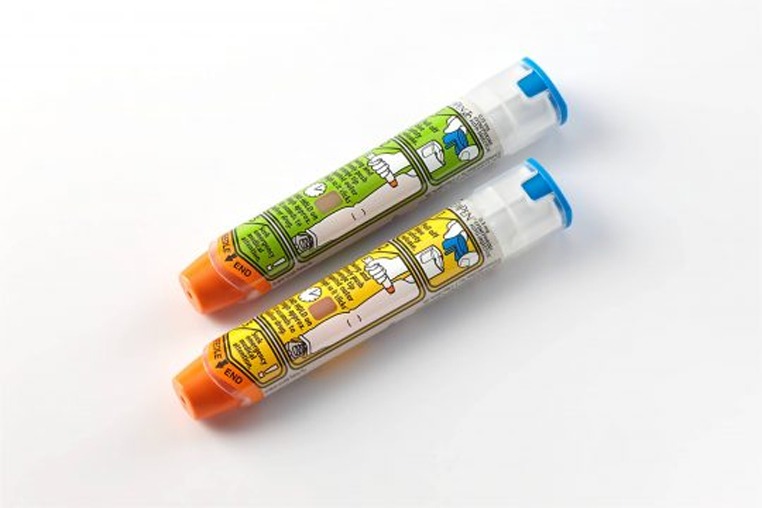Researchers want food labelling regulations tightened after their study found some people with food allergies had anaphylactic reactions to packaged foods.
It began as just another day at the library for Caitlin Louey and her friends.
It was about lunchtime and the 19-year-old was getting hungry. Luckily, she had brought a package of soy crisps from home.
But things went wrong from the moment she took the first bite.
‘I immediately felt my tongue swelling, my lips tingling, I couldn’t breathe, I had a racing heart and soon after I couldn’t talk,’ Ms Louey told newsGP.
‘It was scary … I was just focusing on staying alive.
‘I was lucky enough to have friends who looked after me and gave me the EpiPen before the paramedics arrived.’
The first-year medical student was diagnosed at the age of four with anaphylactic allergy to pecans, walnuts and peanuts, but is careful to avoid all nuts. Her soy crisps featured the precautionary label, ‘may contain traces of nuts’.
Researchers now want food labelling regulations tightened after a study found some people with allergies have anaphylactic reactions to packaged foods. Also first aid course focussed on Anaphylaxis available.
Published in The Journal of Allergy and Clinical Immunology: In Practice, the study involved the Murdoch Children’s Research Institute, the University of Melbourne, Victoria University, the Royal Children’s Hospital, and the University of Sydney.
The nine-month survey of 864 Allergy and Anaphylaxis Australia members found that 58 respondents (6.7%) reported anaphylactic reactions to a packaged food where the suspected allergen was not a listed ingredient.
Of those 58, five (8.6%) said there was no Precautionary Allergen Label (PAL), 31 (53.5%) said there was a PAL, but it didn’t specify the suspected trigger food, and 22 (38%) said there was a PAL that did list it.
Suspected triggers included peanuts, other tree nuts, cashews, milk, eggs, walnuts, sesame seeds, and prawns.
Potential allergens must be declared on Australian food labels when they are present as ingredients or as components of food additives or processing aids. PAL is a voluntary system and uses statements such as ‘may contain traces’ or ‘may be present’.
Lead researcher and Melbourne School of Population and Global Health Allergy and Lung Health Unit postdoctoral research fellow, Dr Giovanni Zurzolo, told newsGP that PAL should be regulated and standardised, rather than voluntary.
‘We need regulation in place for precautionary allergen labelling,’ he said. ‘That system is voluntary, so the manufacturers can choose to do it or not. There is no regulation behind it.
‘Previous research shows that in a supermarket setting, over 60% of products contain a precautionary statement. So it is awfully confusing for a consumer to actually choose whether the food is safe or not.’
 Dr Giovanni Zurzolo says the Precautionary Allergen Label system should be regulated and standardised, rather than voluntary.
Dr Giovanni Zurzolo says the Precautionary Allergen Label system should be regulated and standardised, rather than voluntary.
Dr Zurzolo said VITAL, Voluntary Incidental Allergen Labelling, is a better risk-assessment tool already being used by some in the industry.
‘It is backed by scientific experts, which works on action levels, where if a product contains certain amounts of allergens, if it is above a threshold, it gets labelled with a statement,’ he said.
‘If it is below a threshold, then it gets labelled with no statement … but the problem is that it is not regulated by government, it is voluntary.
‘From a consumer perspective … the statement that they provide on the actual product when they deem that the product is unsafe is very similar to a normal precautionary statement.’
In addition, the VITAL system does not label safe products.
Dr Zurzolo believes Australia could also follow Japan’s lead and completely abolish precautionary labelling.
‘If manufacturers think there is a hint of a trace contamination, or the product could have come in contact with other allergens, then it gets labelled on the ingredients list,’ he said.
The study’s senior author, Murdoch Children’s Research Institute and University of Melbourne Professor Katie Allen, describes anaphylaxis as a serious health issue.
‘This research shows how important accurate food labelling is,’ she said. ‘These reactions can be life-threatening.’
Ms Louey said her anaphylactic reaction, which is the worst she has ever experienced, has had lasting effects.
‘This reaction has had an immense effect on my anxiety,’ she said.
‘I have lost a lot of trust in packaged food and even just eating out. I can’t avoid everything that says “may contain traces”, because that’s impossible. Everything has that [warning] now.
‘So it does limit my freedom of choice and my own ability to know what is safe when I am eating.’
Book a first aid course today with www.canberrafirstaid.com

